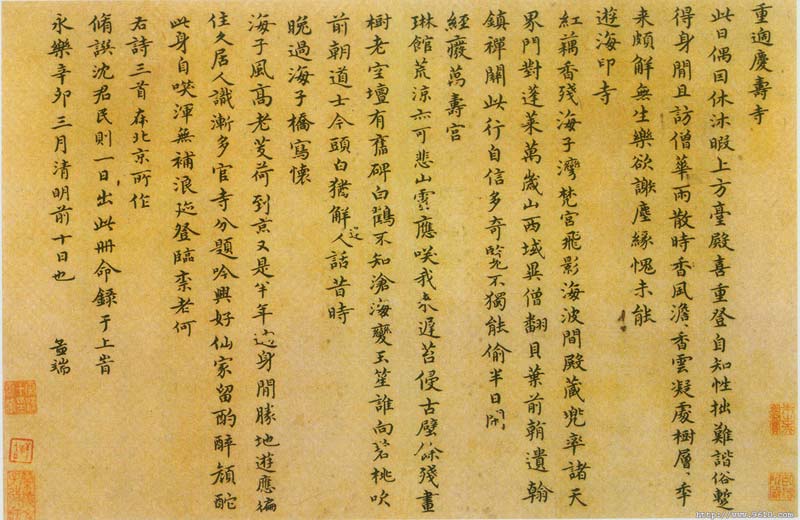Wang Fu (1362-1416) was a famous painter in Ming Dynasty. One is Fu, and then Fu, with the word Meng Duan, and then with the word Xing, the name You Shisheng, the first hidden Jiulong Mountain, and the Jiulong Mountain People, Aosu. Born in Wuxi (now in Jiangsu). Hong Wuchu recommended to the Hanlin for his ability to calligraphy and painting, and became a member of the Zhongshushe. Young, clever, studious, knowledgeable, good-natured and vulgar, proficient in calligraphy, good at poetry, and "Wang Sheren Poetry Collection (王舍人诗集)" handed down to the world. He is good at painting landscapes and ink bamboos. There are two styles of landscape paintings: complex and simple. The complex lines are longer, the transition is flexible, and the center is mostly used, learning from Wang Meng and Wu Zhen's brushwork. Jane pens are used in combination with dry pens, partial fronts, and rubbings. They come from Huang Gongwang and Ni Zan. The painting, ink, and bamboo brushstrokes are flexible and robust, contain calligraphic characteristics, and are mostly influenced by the same text. Well-known in the painting circle in the early Ming Dynasty. In calligraphy, the ancients are expected to move. His works have been passed down to the present, such as "Shanting Wenhui Picture (山亭文会图)", "Wind City Candied Fruit (风城饯咏图)", "Bamboo and Stone Picture (竹石图)" and so on.
Wang Fu, "Returning to Qingshou Temple and Other Poems (重过庆寿寺等诗帖)", regular script on paper, 26.8 cm in length and 41.2 cm in width, collected by the Palace Museum, Beijing

The calligraphy style of this post is strong and elegant, using Zhongwang's small letters as the method. Compared with the prevailing "Taige style" at that time, it has a unique ancient meaning.








